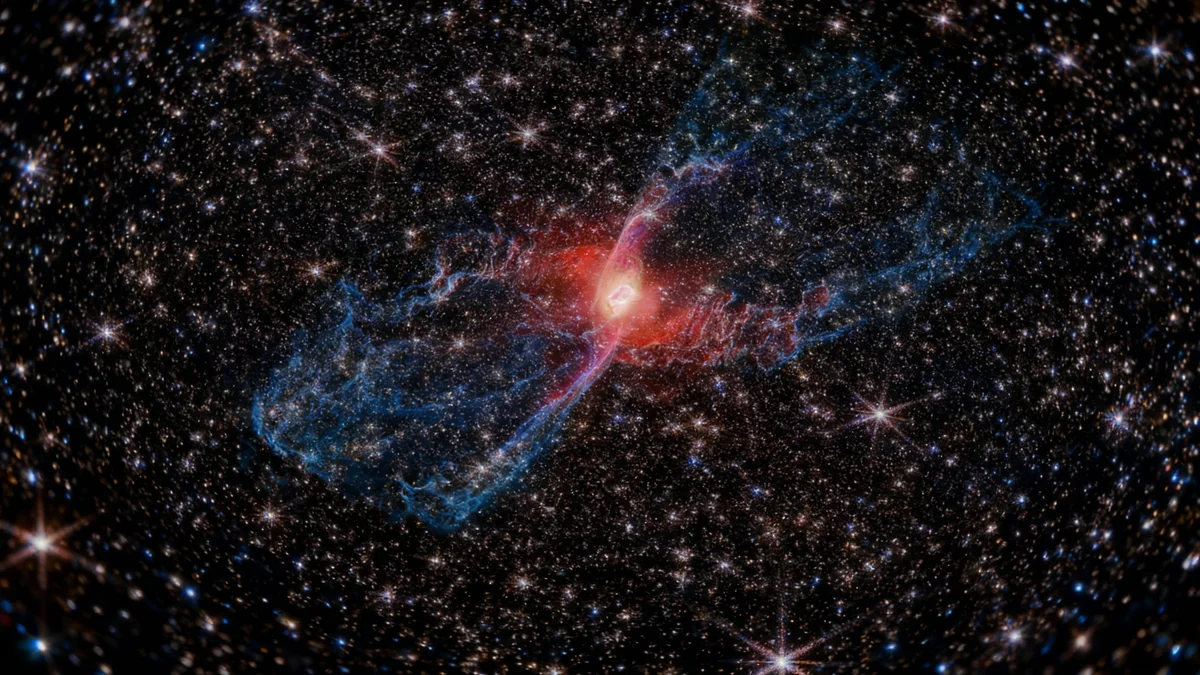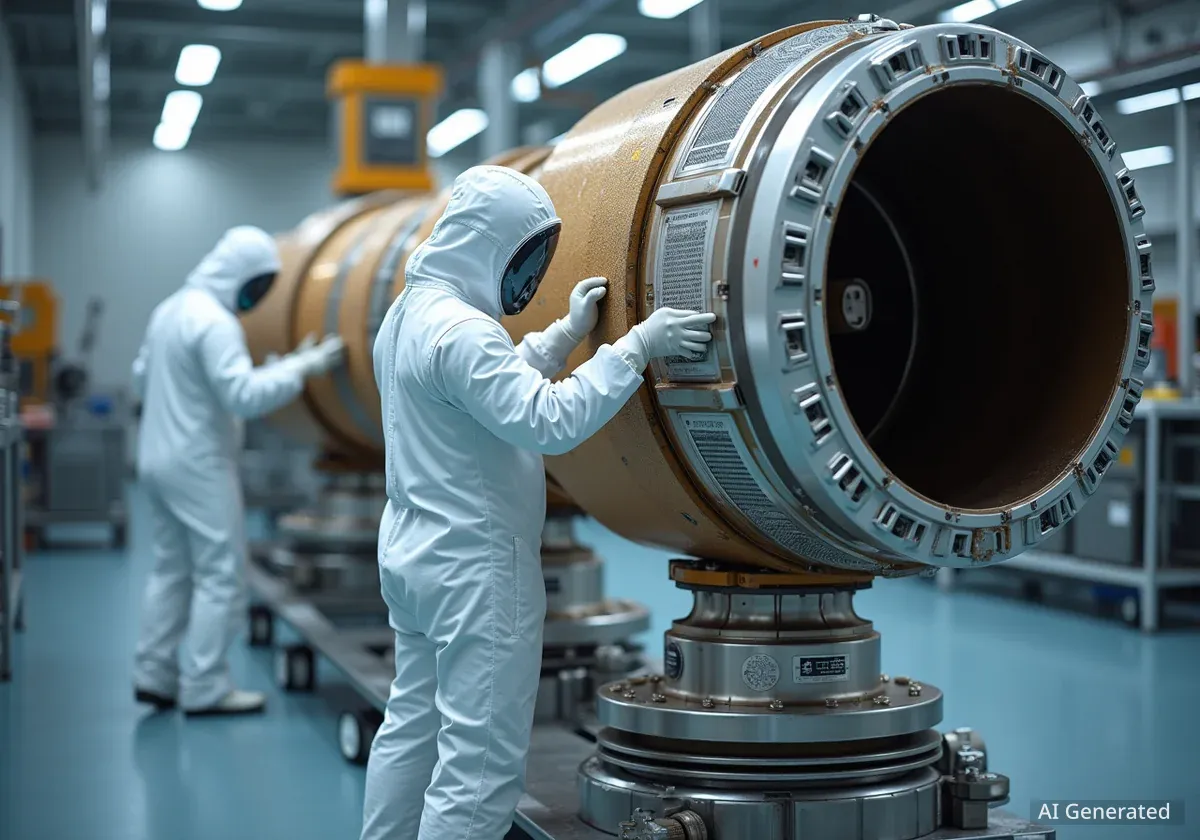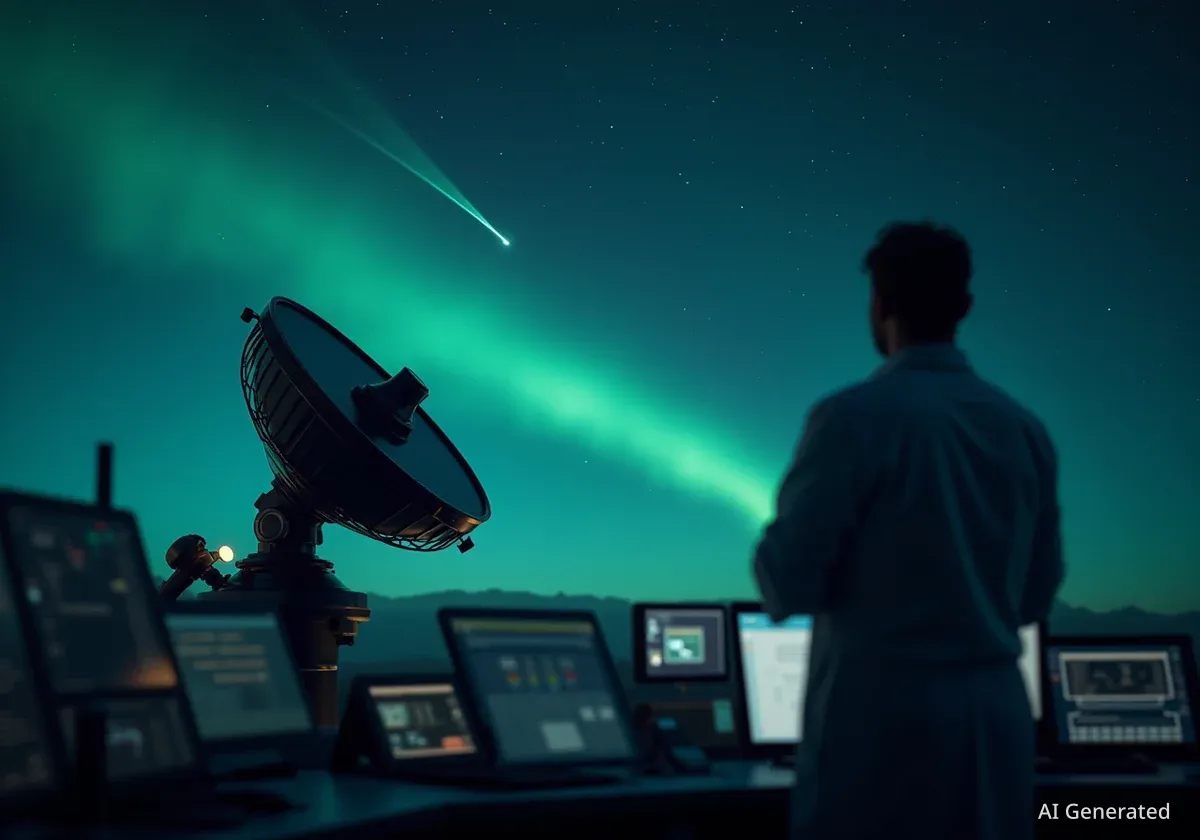Scientists have achieved a clearer view of the powerful jet of hot plasma erupting from the supermassive black hole at the center of galaxy M87. This new perspective, derived from James Webb Space Telescope data, provides unprecedented detail of the cosmic phenomenon located 55 million light-years from Earth.
The enhanced images offer a deeper understanding of this massive energy stream, which stretches for an astonishing 3,000 light-years. Researchers have also identified a hint of the elusive counter-jet, a stream of particles moving in the opposite direction, previously difficult to detect.
Key Takeaways
- New images from the James Webb Space Telescope offer an improved view of the M87 black hole jet.
- The observations, focused on infrared light, reveal fine details of the 3,000 light-year long jet.
- Scientists have detected a subtle indication of the counter-jet, moving opposite to the main jet.
- This discovery helps astronomers better understand black hole physics and galaxy evolution.
Unveiling Cosmic Energy: The M87 Black Hole Jet
Astrophysicists have long studied the powerful jet emanating from the black hole within galaxy M87. This jet consists of highly energetic plasma, ejected at speeds close to the speed of light. The galaxy M87, an elliptical galaxy, is a prominent object in the Virgo Cluster and a significant target for astronomical research.
The recent observations utilize data collected by the James Webb Space Telescope. By focusing on the infrared spectrum, scientists bypassed some of the visual obscurities that hinder observations in other wavelengths. This allowed them to resolve finer structures within the jet itself.
"With every new observation, we inch closer to the complete picture," stated Jan Röder, an astrophysicist at the Institute of Astrophysics of Andalusia in Spain. Röder was part of the research team responsible for this latest M87 project.
Fact: M87 Black Hole Jet Scale
The jet from the M87 black hole extends approximately 3,000 light-years into space. To put this in perspective, our entire solar system is less than one light-year across. This immense scale highlights the incredible power generated by supermassive black holes.
Understanding Black Hole Jets
Black hole jets are formed through a complex process involving extreme gravitational forces and magnetic fields. When gas and dust approach a black hole, they do not fall directly in. Instead, they form a rapidly rotating structure called an accretion disk.
Within this accretion disk, matter heats up to extreme temperatures due to friction and acceleration. A small fraction of this highly energized material is then funneled away from the black hole's poles, forming two powerful jets. These jets are hotter than the Sun and travel at nearly the speed of light.
Historical Context
French astronomer Charles Messier first cataloged the elliptical galaxy M87 in 1781. However, the discovery of the black hole jet came much later. In 1918, American astronomer Heber Curtis observed a "curious straight ray" originating from the galaxy's center. This observation marked the first detection of an extragalactic jet, opening a new field of study in astrophysics.
The Elusive Counter-Jet
One of the most challenging aspects of studying black hole jets has been observing the counter-jet. Since jets are typically launched in two opposite directions, a counter-jet should exist. However, one jet often appears brighter or is more easily observed due to factors like its angle relative to Earth and the effects of relativistic beaming.
The new James Webb Space Telescope images offer a slight glimpse of this counter-jet. While not as prominent as the main jet, its detection provides crucial evidence supporting models of jet formation and behavior. This finding helps astronomers confirm that material is being ejected symmetrically from both poles of the black hole.
- Jet Composition: The M87 jet is primarily composed of hot plasma, which includes electrons, protons, and other charged particles.
- Energy Source: The energy driving these jets comes from the gravitational potential energy of matter spiraling into the black hole and strong magnetic fields.
- Relativistic Speeds: The particles within the jet move at speeds approaching the speed of light, making them a source of high-energy radiation.
The Role of James Webb Space Telescope
The James Webb Space Telescope (JWST) is an infrared observatory, capable of detecting light that is invisible to the human eye. This capability is vital for studying distant cosmic objects and phenomena like black hole jets. Infrared light can penetrate dust clouds more effectively than visible light, providing clearer views of obscured regions.
The telescope's advanced instruments allowed the research team to capture the detailed infrared images of the M87 jet. These images were then composited to create the sharper view. Such observations are critical for advancing our understanding of how supermassive black holes influence the evolution of their host galaxies.
The M87 black hole, known as M87*, was the first black hole to be directly imaged by the Event Horizon Telescope collaboration in 2019. This new data from JWST complements those earlier observations, providing a more complete picture of the black hole system.
Future observations with the James Webb Space Telescope and other advanced instruments are expected to provide even more insights. Scientists hope to further refine their understanding of the mechanisms that power these colossal cosmic blowtorches and their impact across the universe.
Data Point: Black Hole Mass
The supermassive black hole at the center of M87 is estimated to be approximately 6.5 billion times the mass of our Sun. Its immense gravitational pull is responsible for the powerful jet observed.
Future Research and Implications
This new, sharper view of the M87 jet opens doors for further research. Scientists can now analyze the jet's structure with greater precision, potentially revealing details about its magnetic field configuration and the acceleration processes of particles. Understanding these processes is key to solving long-standing mysteries in astrophysics.
The detection of the counter-jet, however subtle, provides valuable data for theoretical models. It helps confirm predictions about the symmetrical nature of jet ejection from black holes. This information contributes to a broader understanding of how black holes interact with their surrounding environments and shape the galaxies they inhabit.
Observations like these are crucial for connecting the physics of black holes to larger cosmic structures. They help explain how energy from these compact objects can influence star formation, gas distribution, and the overall evolution of galaxies over billions of years.





